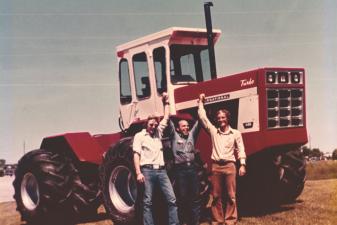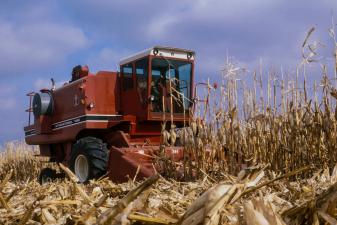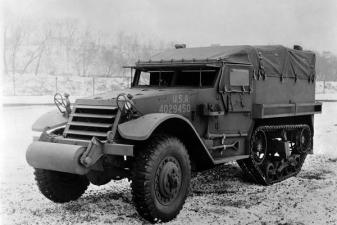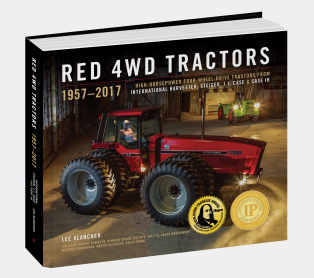How the Axial-Flow Combine was Developed Under Lock and Key

When International Harvester started development of a rotary combine, the major combine manufacturers were all housed in the central Midwest, and in fact the largest competitor for the red machines, John Deere, had their combine engineering facilities right next door to the IH facility in East Moline, Illinois.
While engineers and staff were instructed to keep all matters at work confidential, this was a small community. The colors mingled and mixed, and spent some of their free time playing in softball games, bridge clubs, and school functions.
Word had a way of getting out, and secrets never seemed to last long.
When the IH engineers began work on a new technology in the late 1950s, they had an inkling that the work would take a good amount of time. They estimated years when in fact development would require decades.
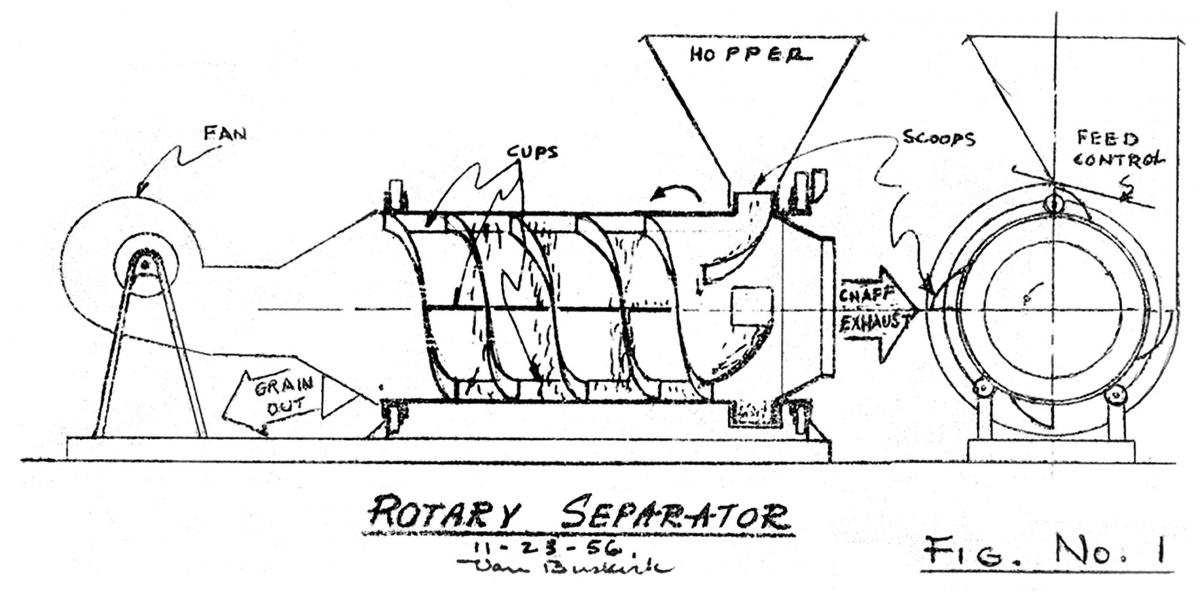 The early rotary combine development was done starting with this drawing of Elof Karlson’s concepts done by Mel Van Buskirk.
The early rotary combine development was done starting with this drawing of Elof Karlson’s concepts done by Mel Van Buskirk.
No matter. Secrecy would be critical, as the minute the other colors knew what the red team was building, similar development programs would begin. Any competitive edge would be reduced or lost.
So early in the history of the axial-flow combine development, the team began working inside a locked garage at the East Moline Plant. That garage was a non-descript cement-block building with frosted windows. Access to the garage for the next 17 years would be strictly controlled. Only the key engineers working on the project were allowed inside. This unassuming garage would become one of the the most important buildings in the vast Harvester empire.
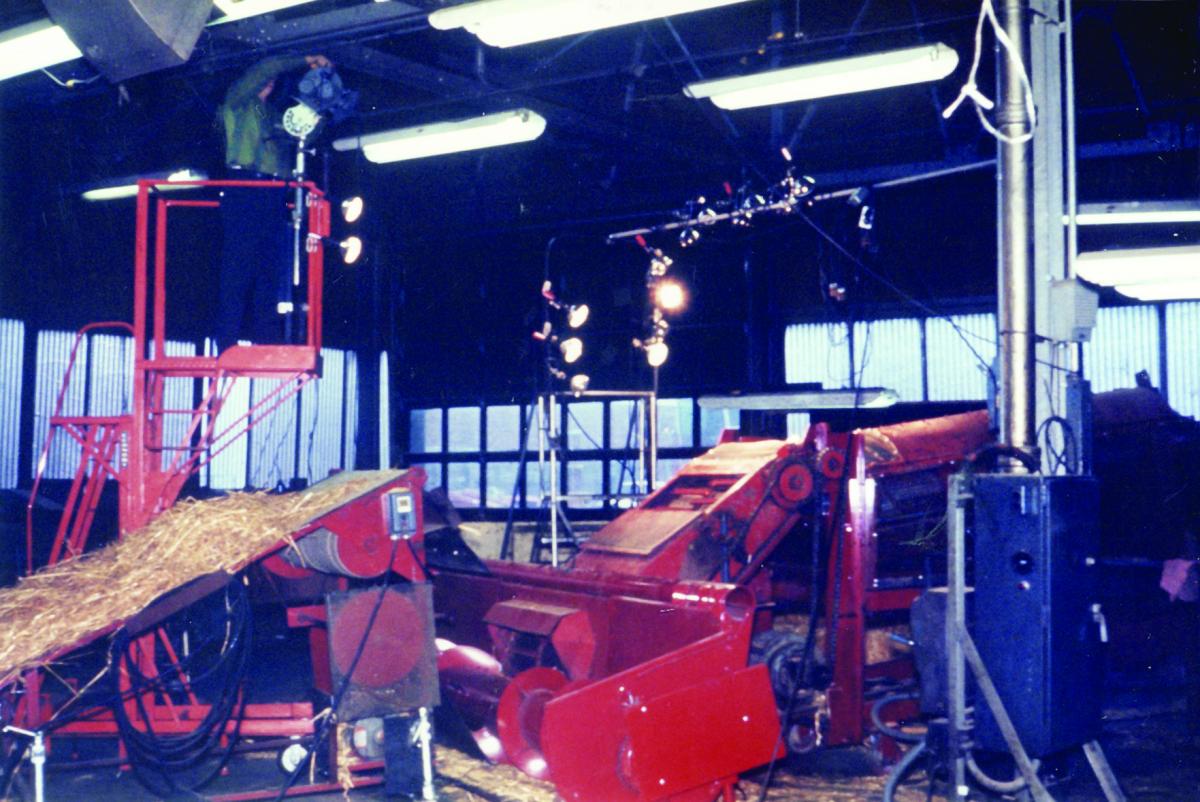 This is the secret garage in the 1970s. Only a very few images of the garage survived to modern times.
This is the secret garage in the 1970s. Only a very few images of the garage survived to modern times.
In the early days, only a very few people were allowed in the garage. The key engineers on the project were Elof Karlsson and Mel Van Buskirk. They worked on a variety of prototypes in the garage, and for years their development was kept off the books. Management in Chicago may not even have known the project existed.
By 1969, however, the Axial-Flow combine was getting a fair amount of attention. Development was on the books, and Harvester people knew this technology had great potential. They also became aware that despite the machine showing great promise, a raft of frustrating setbacks and niggling technical challenges kept pushing back release dates.
 Early Axial-Flow test units were installed inside of 15-series chassis.
Early Axial-Flow test units were installed inside of 15-series chassis.
Dave Gustafson started with International Harvester in March 1969 as a test engineer. That was the start of a lifetime with red combines, and his introduction to the secret garage
“The first word I said was ‘tractor,’” Gustafson said. “I was destined to be an engineer . . . I grew up on Hs and Ms, so there was no doubt what color it was.”
He studied agricultural engineering at Iowa State and he worked with a group on a senior project to home-build a harvester that used a John Deere 4020 with a reversible operator’s deck, two IH 234 shellers, and a four-row head. The group had unwittingly created a design similar to the CX-11 experimental. For Gustafson’s design reviews, some of the engineers from East Moline came out. They saw his work, and when he was ready for a job, they hired him.
Gustafson has been working with red combines ever since.
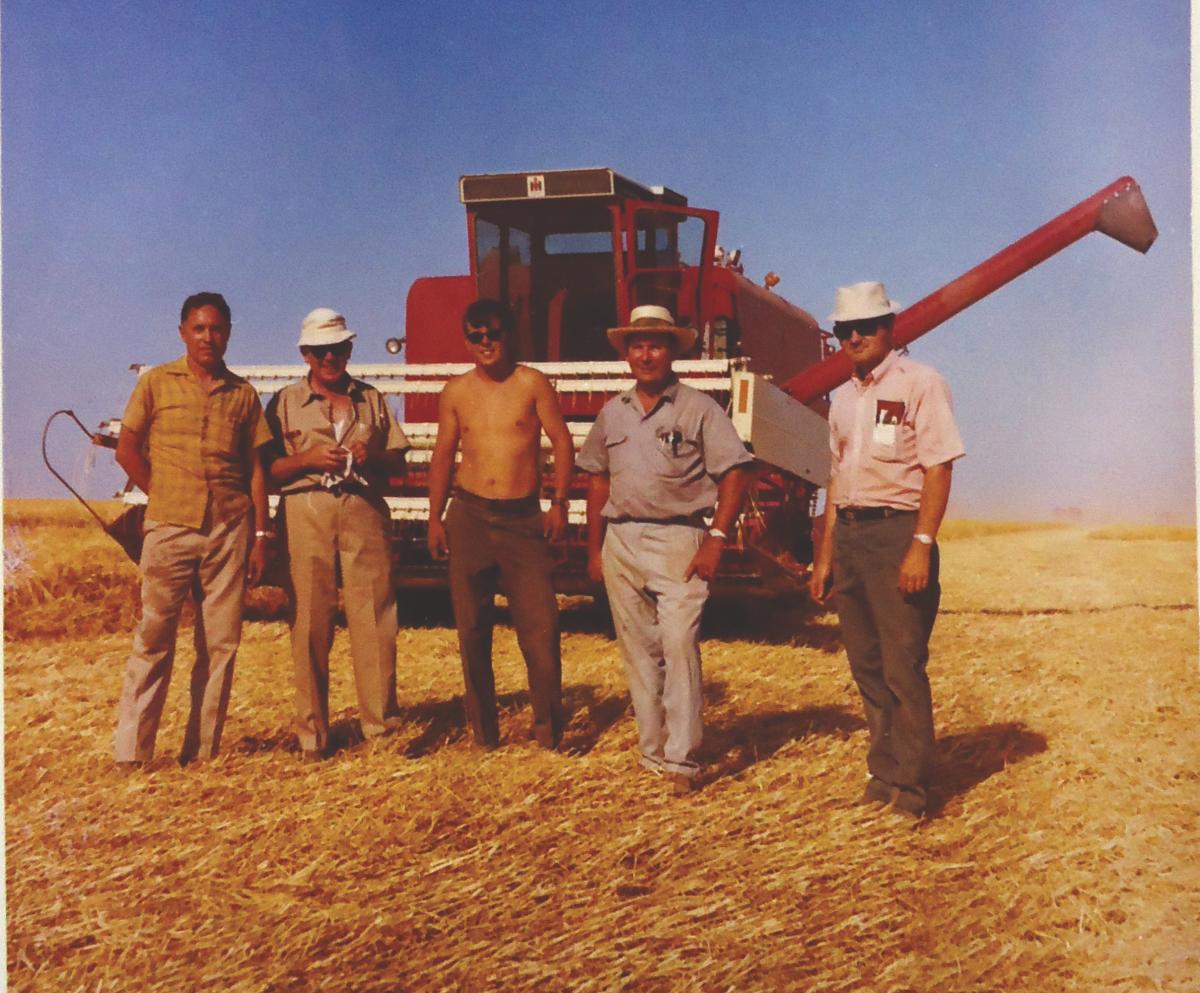 Dave Gustafson (center man, with no shirt) testing combines in Australia in the 1970s.
Dave Gustafson (center man, with no shirt) testing combines in Australia in the 1970s.
On his first day at work back in 1969, he tested a 715 combine under the tutelage of Camille Beert. Not long after that, he went to work for test engineer Ken Johnson to help with the top-secret project in the garage.
When Gustafson started, roughly a dozen people set foot in the garge. Secrecy remained a priority. No one but the core group of engineers and mechanics were allowed inside. The windows were still frosted.
Behind the locked doors in the garage, the test setup for the rotary combine consisted of two stands. One contained the rotor, and the other contained the cleaning unit. Power was provided by an electric motor with a recording meter to capture input power data. The two units could be moved around the room to be run individually or paired to test separation and cleaning at the same time.
The test unit was fed with traditional bundles of grain and corn. A local farmer provided the bundles, which were stored in a barn in the area. In order to simulate wet crop, the material would be sprayed with a garden hose for a set number of seconds.
The crop was run through—Gustafson recalls 20 or 30 feet of it would run—and dumped out onto a large canvas for analysis. The material that came out was run through a re-cleaner and weighed to determine results.
The rotor and cleaning unit were shelled in Plexiglas so that crucial parts of the process were visible. Once a test was set up to run, word would go out to the engineers to come in and watch.
 Material runs behind plexiglass in the secret garage.
Material runs behind plexiglass in the secret garage.
“Run after run, we’d run different feed rates and we’d run different styles,” Gustafson said of the tests in the garage. “We would develop the parts in conjunction with other field studies we had. If the field had a problem, we would move it into the lab. If we came up with an improvement, we’d send it out in the field and say, ‘It looks good in here. Does it look good out there?’”
Eyes have limitations, and rotors work rapidly. In order to accurately dissect each test run, the engineering team developed a unique system. Each run was filmed with 16mm high-speed film that recorded 400 frames per second. The film was taken to the local television station and processed the next morning along with the station’s nightly sports footage. The film was picked up at 6 a.m.
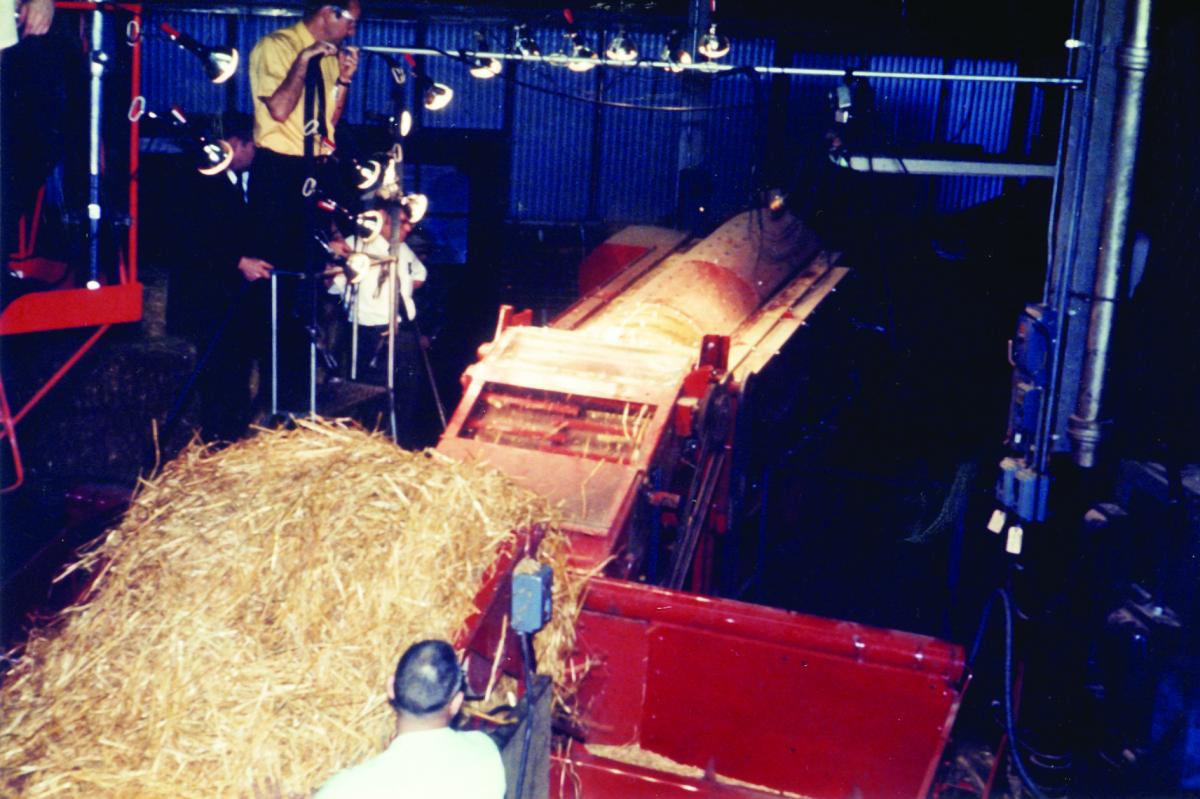 High-speed cameras filmed the test rotor at work, and engineers would later pore over those films to understand how the straw flowed, and what changes they had to make to make the process work.
High-speed cameras filmed the test rotor at work, and engineers would later pore over those films to understand how the straw flowed, and what changes they had to make to make the process work.
The day after a test, the engineering team started their day obsessing over the film footage. “I often sat in on the first run,” Murray wrote. “I was fascinated by what they could learn by studying that film, often a frame at a time in the special projector to see rate of flow and angle of movement of the material. Without that slow, stubborn process, I seriously doubt we would ever have had a really successful system.”
Any hesitation they spotted on the footage meant trouble in the field. Hesitation meant grain was wrapping around the rotor or plugging the entrance or exit.
For the combine to function properly, flow of material had to be smooth. Finding that sweet spot was a painstaking process.
From the very beginning, the rotor worked wonderfully with corn and struggled with grain, particularly when the straw was large and tough.
“It did not like long strawed crops, especially tough crops,” Gustafson recalled. “It didn’t want to go in the front. When it got inside, it wouldn’t go to the back. Then when it got to the back, it wouldn’t go out the back. Every part of the rotor development was challenging.”
The engineering group persevered. They had seen the machine at work in the fields, at times running faster and more productively than traditional combines from their own line as well as the competition.
To learn more about International Harvester and how they revolutionized Combines, check out Red Combines 1915-2015.


